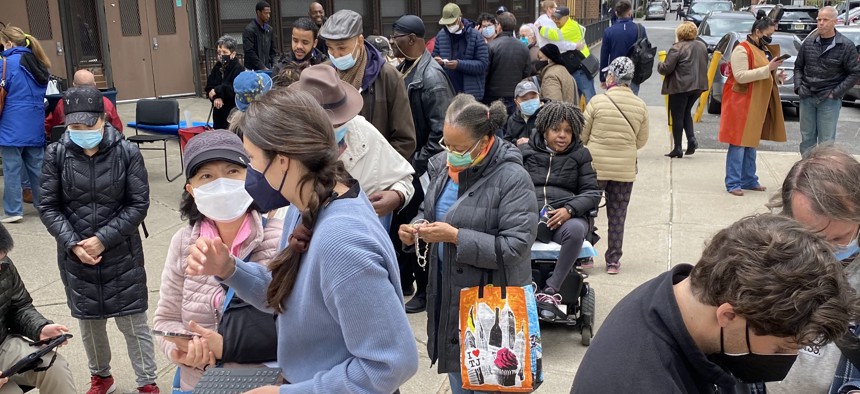Residents in two New York City Housing Authority apartment complexes on the Upper Eest Side were the first to qualify for new, reduced cost broadband service that when paired with the federal Affordable Connectivity Program uses a subsidy to make the service free. The idea originated with New York City Council Member Julie Menin, who represents District 5 where both public housing complexes are located. Menin announced the new service Wednesday and envisions it being expanded to all NYCHA complexes.
City & State caught up with Menin to learn more about the plan and her vision of expanding broadband access. This interview has been edited for length and clarity.
Please discuss the lack of broadband access in New York City and how your plan came about.
This problem became really acute to me when I was running the census for the city, because a third of New Yorkers lack access to broadband. It was a real problem in terms of accessibility, reaching New Yorkers who did not have access to broadband. And when I first took office in January, the number of NYCHA residents in my district who told me that they did not have broadband because it was too expensive was shocking. It’s outrageous and it’s unacceptable. If you don’t have access to broadband, you can be shut out of trying to apply for a job or getting a fair wage. And you know, your resume for job interviews. If you have children, they are being left out of the process in terms of not having connectivity to Wi-Fi and the fact that a third of New Yorkers don’t have this, it is absolutely shocking. And so what this program seeks to do is to roll it out in NYCHA and it’s something that 100% is scalable for the City of New York.
So, I started working on this project over last summer and reached out to a not-for-profit based out of San Francisco called Education Superhighway, which has been doing free Wi-Fi in public schools across the country. I brought them in to help advise on the project. And basically what we did was go to Spectrum and Verizon and we got them to offer a truly low-cost plan, but one that is actually high quality. In the past, first of all, Verizon and Spectrum plans were oftentimes cost-prohibitive, and they didn't really have the features that you need to have to have a true broadband package. So, we got them to agree to do this and certify all the residents of Isaacs Houses and Holmes Towers, which are two developments in the East Harlem part of my district. At the same time, the Affordable Connectivity Program from the Federal Communications Commission provides a $30-a-month federal subsidy that NYCHA residents can qualify for, but that many are not aware of. We are pairing that federal subsidy with the new low-cost plan, and that is going to bring the residents’ cost to zero.
Please be more specific about Education Superhighway’s involvement.
So we brought in Education Superhighway, which is extremely familiar with the kinds of plans that we needed to offer. So they aided with the negotiation.
And are the reduced broadband rates fixed, or do they have a shelf life?
With the Verizon plan, they have assured us that they will always offer this low-cost plan. We try to remain neutral and not promote one plan over the other, but Verizon does offer higher speed plan connectivity. As for Spectrum, we asked them to also keep the low cost in perpetuity.
Can you provide more details on how this plan works in tandem with the Affordable Connectivity Program?
The federal Affordable Connectivity Program, or ACP, is an FCC subsidy of $30 a month, and that is in perpetuity. A lot of people don’t know about that program. So it’s really, really important that we get that information out there.
How do you envision expanding this low-cost broadband to help all of NYCHA?So in order to do this, a couple of things had to happen. First, we got Verizon and Spectrum to reduce the cost and do a high-quality plan that didn’t exist before. Second, we paired it with the $30-a-month subsidy, which is incredibly important. The guidelines for who’s eligible for it require basically that a household’s income is at or below 100% of the federal poverty guidelines. And that can be anyone who participates in the Supplemental Nutrition Assistance Program, Medicaid and who lives in public housing. This is why NYCHA residents automatically qualify for this $30-a-month subsidy. This is scalable. The city of New York has been grappling with how to provide free broadband. This is the way to do it. This is a way that does not cost any city funding to do this. This is absolutely doable.


